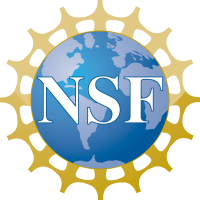You are here
MDIBL track-2 Scientific Research Themes
Research Theme(s) for NSF TRACK2 Proposal
Mount Desert Island Biological Laboratory
Environmental Genomics
Organisms encounter many diverse environmental stressors in their natural habitats and must have the capacity to sense and respond to them in order to survive. Environmental genomics seeks to compare genes from natural populations of organisms that have varying capacities to tolerate a particular stress. These comparisons provide insight into the mechanisms by which individual populations adapt. There is significant involvement in and available resources for such adaptation studies among NECC states. For example, investigators at MDIBL, UNH and Dartmouth College utilize two powerful model organisms native to the northeast, the water flea (Daphnia pulex) and killifish (Fundulus heteroclitus). Daphnia is an ecoresponsive microcrustacean that lives in freshwater lakes and recently had its genome sequenced [Colbourne et al, Science (2011)]. Fundulus live in coastal estuaries along the Atlantic coast. The National Science Foundation recently funded a new effort to sequence the Fundulus genome and the genome annotation will be conducted in a workshop hosted at MDIBL in Summer 2012. Notably, the second annual Environmental Genomics course will take place at MDIBL in August 2011 and was again oversubscribed. It is the first course of its kind in this emerging scientific field, and uses Daphnia and its genome as the model for hands-on experimental and computationally based training for students and faculty.
Given the importance of these model organisms for studying environmental adaptation and the resident expertise in this emerging research area, we propose to develop data resources that would significantly advance such studies. Adaptive responses to diverse environmental stressors (e.g., chemical contaminants to hypoxia) will be comprehensively evaluated using high-throughput gene expression and genome re-sequencing technologies in these comparative models. These data would help the NECC investigators and their collaborators involved in these projects to begin to understand how the model organisms respond to stress and generate new hypotheses to investigate in additional functional studies. Generation, storage and analysis of these data will require use of NECC’s existing cyberinfrastructure including the shared data center. Having new cloud-based resources that have been suggested to be part of the NECC TRACK2 proposal would be a great resource for this research program as well.
We also propose to continue hosting yearly workshops on Environmental Genomics and collaborate closely with the Daphnia and Fundulusresearch communities, of which MDIBL is an active member, to maximize the scientific impact of the studies and subsequent data.
To accomplish this research program funding would be needed to support research projects, personnel, cloud computing, and workshops. The specific roles of each NECC state would be determined later so that we can best leverage existing resources and expertise.
Comparative Functional Genomics of The Little Skate, Leucoraja erinacea
Comparative physiological and genomic studies in evolutionarily diverse species can yield important insights into conserved processes that underlie human health and disease. In a recent inter-state collaborative project, the NECC made a profound contribution to the comparative approach by sequencing and initiating the annotation of the cartilaginous fish known as the little skate (Leucoraja erinacea). This organism has been utilized worldwide in studies of renal physiology, toxicology, immunology and stem cell biology; however, it belongs to an evolutionary group that was previously underrepresented among available genomic sequence data. To date, the NECC has generated greater than 50x coverage of the genome and held three highly successful genome annotation workshops that have characterized many biomedically important gene families and provided training in bioinformatics to students and faculty from more than five states. These data are being made publicly available for worldwide access.
We propose to build on the success of this resource building and training by creating an atlas of gene expression data to further advance comparative studies beyond genomic structure and regulation by enabling cross-species evaluations of tissue-specific gene expression patterns. Gene expression in tissues will be profiled using high-throughput sequencing technologies for RNA and small RNAs, including microRNAs. These data will be valuable as we will be able to better annotate the skate genome sequence and will be able to display the expression profile for each gene for the worldwide scientific community to use. We will work with the elasmobranch research community to identify the tissues that will be profiled to maximize the scientific impact of the studies and subsequent data. The specific tissues and number of samples would be determined later based on input from the elasmobranch community and level of funding. The consequent combination of the skate genomic sequence and gene expression data will be novel and highly complementary in that these data sets may be used together to improve understanding about fundamental relationships between genomic structure and expression, mechanisms of transcriptional regulation, and genomic features that result in tissue-specific isoforms. Generation, storage and analysis of these data will require use of NECC’s existing cyberinfrastructure including the shared data center. Having new cloud-based resources that have been suggested to be part of the NECC TRACK2 proposal would be a great resource for this research program as well.
We will leverage our substantial training expertise to host yearly workshops comparable to those that the North East Bioinformatics Collaborative of the NECC led in the past. However, these workshops will focus on the analysis of differential gene and small RNA expression in the tissues of interest.
To accomplish this research program funding would be needed to support research projects, personnel, cloud computing, and workshops. The specific roles of each NECC state would be determined later so that we can best leverage existing resources and expertise.


